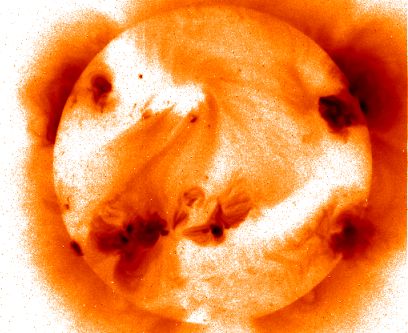It's been slow moving getting back to work, but it's time to get going! 2009 promises to be full of exciting scientific discoveries, political developments, economic changes (yikes!) and, of course . . . awesome Science Chicago events!
So I totally forgot that yesterday (Jan. 4th, 2009) was the Perihelion, which is the day of the year when the Earth is closest to the Sun (peri meaning "near", and helion, for relating to the Sun). It's true - yesterday morning, just as I was hopping into the shower, we were just over 91 million miles away from our closest star. Hard to imagine, given that my wet hair turned into crispy frozen curls when I went outside.

Picture of a Perihelion Sun, taken from an orbiting space observatory. Image from NASA, credit: ISAS, Yohkoh Project, SXT Group
The opposite phenomenon occurs at aphelion in July, when Earth is farthest from the Sun, at about 95 million miles. Both of these events occur because Earth doesn't orbit the earth in a circle, it's really an ellipse (like an egg or oval shape). So, a question for you: If the orbit path was in fact a circle, when do you think perihelion or aphelion would happen?
An incredibly cool aspect of astronomy is that planets behave in predictable ways - they have precise orbits and axes of rotation. So scientists can actually calculate when future perihelion and aphelion will occur in the future, even years to come!
Happy New Year!
Author's Note: Sources:
http://www.copusproject.org/yearofscience2009/
http://blogs.discovermagazine.com/badastronomy/2009/01/04/does-this-perihelion-make-my-sun-look-fat/
http://www.spaceweather.com/glossary/aphelion.html
http://www.windows.ucar.edu/tour/link=/physical_science/physics/mechanics/orbit/perihelion_aphelion.html&edu=high
http://aa.usno.navy.mil/data/docs/EarthSeasons.php
Editor's Note: For more blogs from Dr. Rabiah, visit Science Chicago's website at: http://www.sciencechicagoblog.com